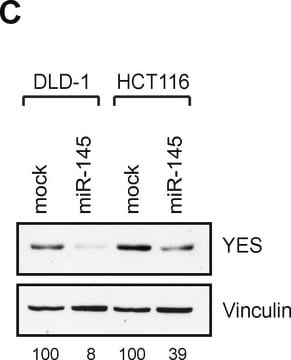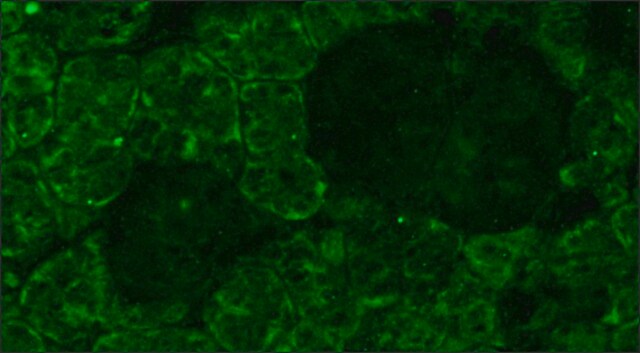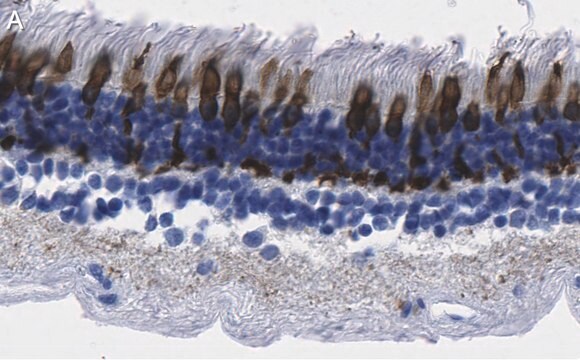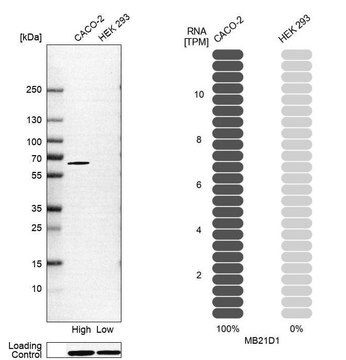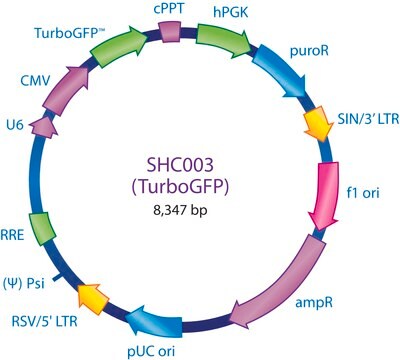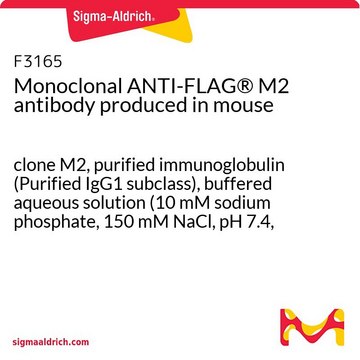SAB4200762
Anti-Opsin antibody, Mouse monoclonal
clone RET-P1, purified from hybridoma cell culture
Sinônimo(s):
Anti-Opsin 2, Anti-Rhodopsin
About This Item
Produtos recomendados
fonte biológica
mouse
Nível de qualidade
forma do anticorpo
purified from hybridoma cell culture
tipo de produto de anticorpo
primary antibodies
clone
RET-P1, monoclonal
Formulário
buffered aqueous solution
peso molecular
~39 kDa
reatividade de espécies
avian, bovine, fish, mouse, rat, human, amphibian, turtle, rabbit
concentração
~1 mg/mL
técnica(s)
ELISA: suitable
immunoblotting: 2-4 μg/mL using human retinoblastoma Y79 cell line extract.
immunofluorescence: suitable
immunohistochemistry: 5-10 μg/mL using rat eye frozen sections.
radioimmunoassay: suitable
Isotipo
IgG1
nº de adesão UniProt
Condições de expedição
dry ice
temperatura de armazenamento
−20°C
modificação pós-traducional do alvo
unmodified
Informações sobre genes
rat ... Rho(24717)
Descrição geral
Aplicação
- immunoblotting
- immunofluorescence
- immunohistochemistry
- enzyme linked immunosorbent assay (ELISA)
- radioimmuno assay (RIA)
Ações bioquímicas/fisiológicas
Outras notas
forma física
Não está encontrando o produto certo?
Experimente o nosso Ferramenta de seleção de produtos.
Código de classe de armazenamento
10 - Combustible liquids
Classe de risco de água (WGK)
WGK 3
Ponto de fulgor (°F)
Not applicable
Ponto de fulgor (°C)
Not applicable
Escolha uma das versões mais recentes:
Certificados de análise (COA)
Não está vendo a versão correta?
Se precisar de uma versão específica, você pode procurar um certificado específico pelo número do lote ou da remessa.
Já possui este produto?
Encontre a documentação dos produtos que você adquiriu recentemente na biblioteca de documentos.
Global Trade Item Number
| SKU | GTIN |
|---|---|
| SAB4200762-100UL | 4061833253786 |
Nossa equipe de cientistas tem experiência em todas as áreas de pesquisa, incluindo Life Sciences, ciência de materiais, síntese química, cromatografia, química analítica e muitas outras.
Entre em contato com a assistência técnica
